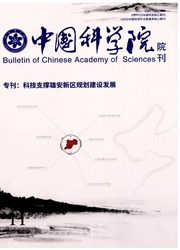

 中文摘要:
中文摘要:
在自然要素禀赋第一本性和交通区位条件第二本性的支撑下,中国区域发展形成了基于中心地理论的中心.腹地结构。然而,以信息化条件和人力资本为标志的第三本性涌现后,区域发展需要新思想和新模式的指导,枢纽.网络结构适应了这种需要。枢纽.网络结构承认第三本性,遵从区域机会公平的政治逻辑,反映自由发展的经济思想,在扁平化网络组织理论的影响下,重视区域领导力,形成面向整体的专业化分工和一体化协作的区域新格局。
 英文摘要:
英文摘要:
Under the support of first nature (natural endowments) and second nature (traffic and location), Chinese regional de- velopment has formed a center-hinterland structure based on the central place theory. After the emergence of third nature marked by informationization and human capital conditions, regional development needs the instruction of new ideas and new modes. A hub-network structure allows the third nature, complies with the political logic of regional fairness, and reflects the economic ideas of free development. Under the influence of flat network organization theory, it also puts a high value on the re- gional leadership, which will form a new regional pattern with division of labor based on specialization for the overall coordi- nation and integration of collaboration.
 同期刊论文项目
同期刊论文项目
 同项目期刊论文
同项目期刊论文
 期刊信息
期刊信息
